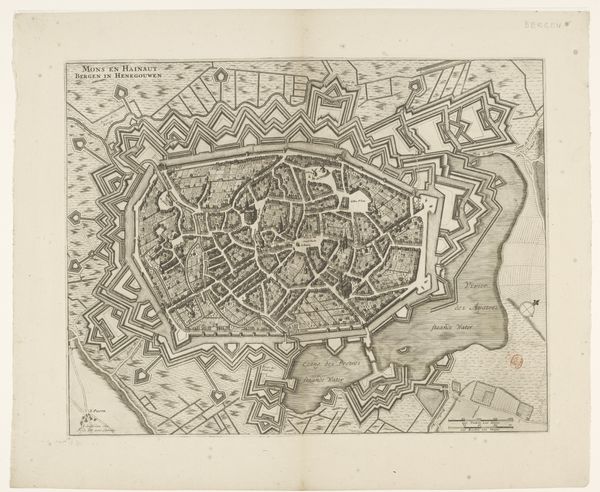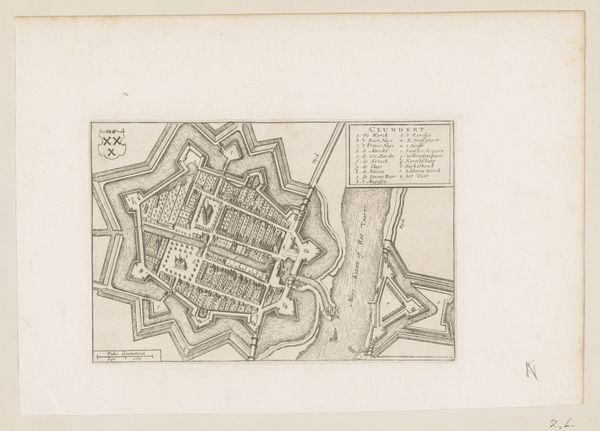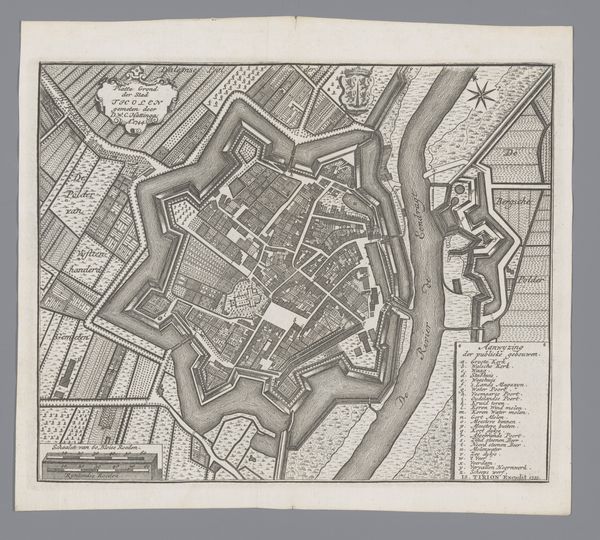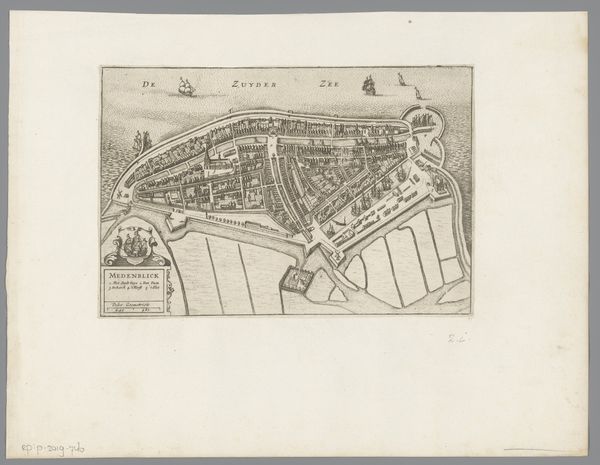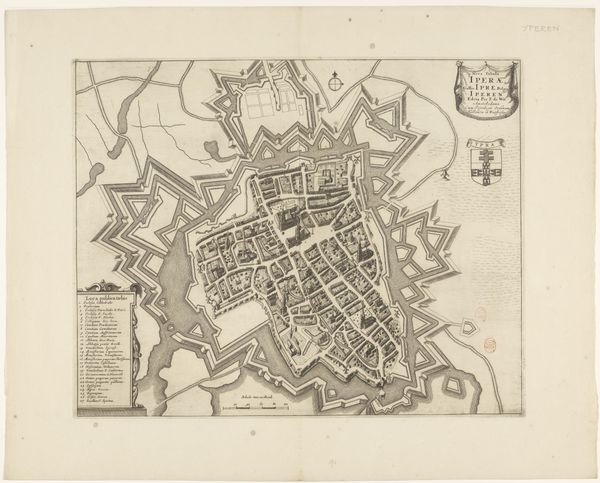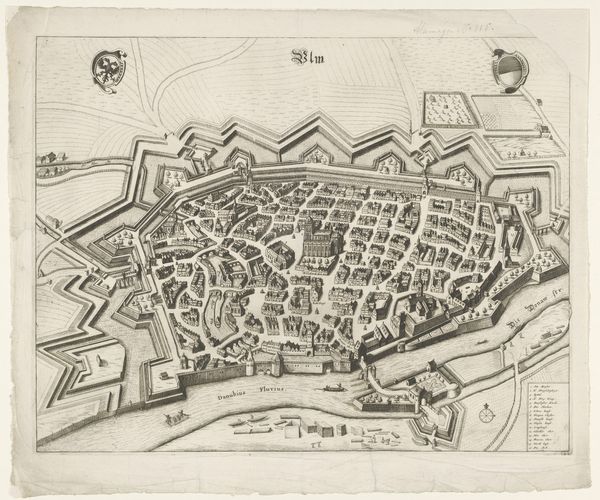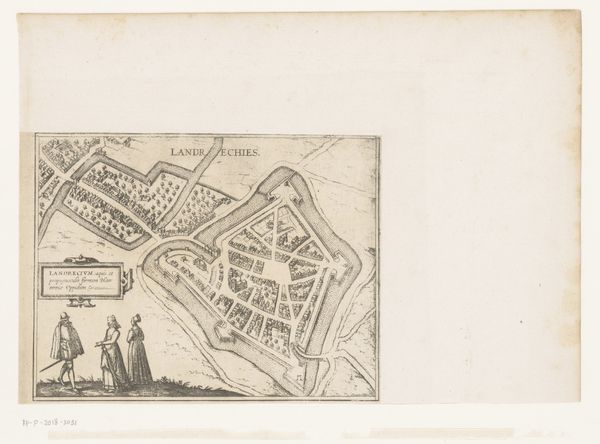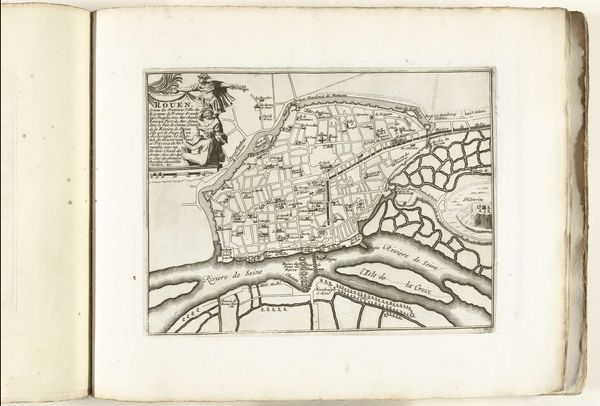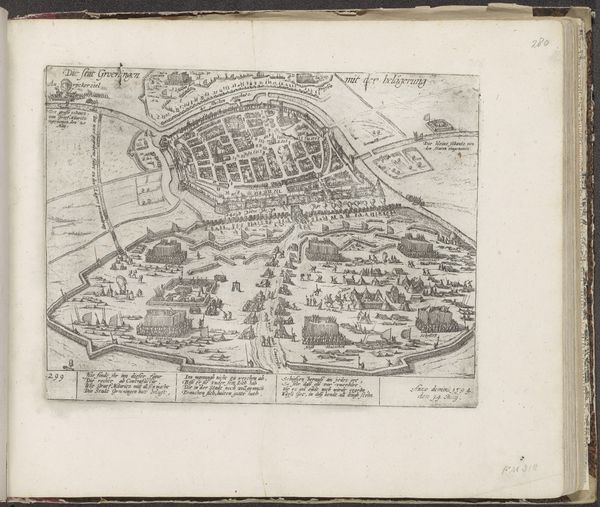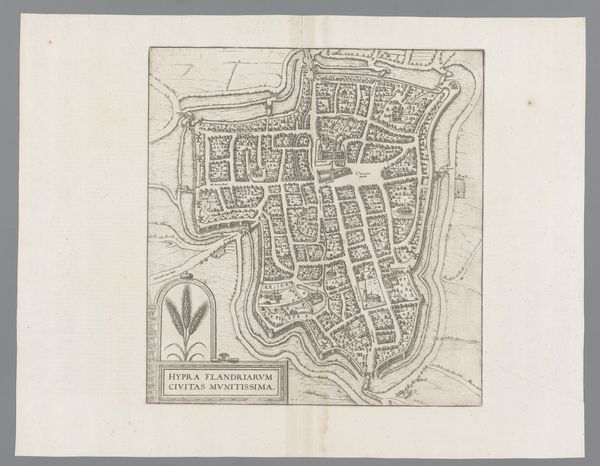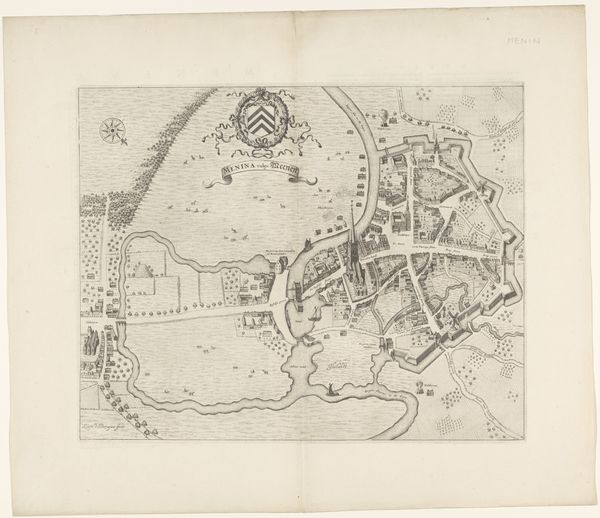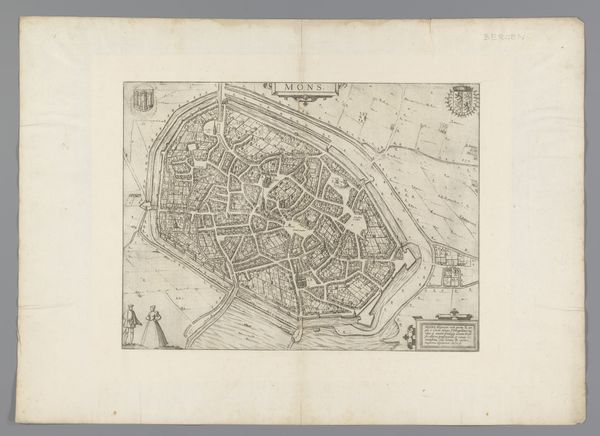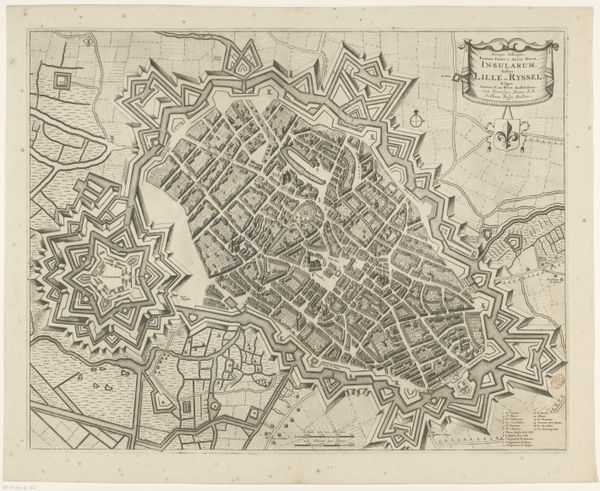
Dimensions: height 186 mm, width 230 mm
Copyright: Rijks Museum: Open Domain
Curator: Before us, we have an interesting bird's-eye view, an engraved city plan titled "Plattegrond van Kopenhagen." Dating back to 1774, it provides a glimpse into the cityscape of Copenhagen from the late Baroque era, attributed to an anonymous artist. Editor: My first impression is of an incredibly organized space, though almost oppressive in its geometric rigidity. The neat lines and sharp angles, emphasized by the monochrome ink, create a feeling of imposed order. Curator: Indeed. Baroque city planning was all about control and grandeur. Beyond just practicality, maps like these often functioned as symbols of power and civic pride. Consider how the uniform arrangement projects a sense of stability, a bulwark against chaos. The visual language implies rational urban management. Editor: Absolutely, but let’s consider how the medium, engraving, lends itself to that feeling. Each precisely etched line contributes to the sense of meticulous design. The restricted tonal range intensifies the stark contrast between urban organization and the natural world. I’d suggest this visual rhetoric enforces ideological order more than functional accuracy. Curator: Perhaps. Though it's interesting how the almost diagrammatic precision of the cityscape contrasts with areas represented using pictorial techniques like suggesting topographic or vegetation with clustered marks; perhaps indicating subtle resistance against such all-encompassing schemes? Could it be the mapmaker subconsciously injected organic life and local idiosyncrasies back into this rationalized representation? Editor: Intriguing! From my point of view, such a slight difference in textural handling just heightens that core dichotomy further still. Overall, what most resonates is the clear imposition of design thinking over nature, rather than an equal relationship, if I’m reading you right. Curator: On the contrary, your semiotic interpretation sharpens our focus onto how spaces themselves operate symbolically! The image captures a transformative cultural moment as humanity reimagines urban areas around emerging models rooted deep inside collective dreams, and psychological structures based in human ingenuity! Editor: Thank you; for me, exploring it through a Formalist lens exposes fundamental visual patterns at play that still reverberate in modern cartography, yet resonate beyond its ostensible representational intentions, to provoke consideration of spatial agency.
Comments
No comments
Be the first to comment and join the conversation on the ultimate creative platform.
